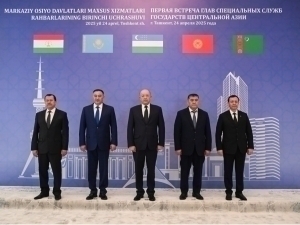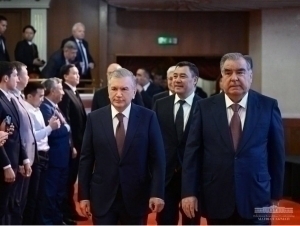World Bank: Uzbekistan would struggle without migrants
Local
−
07 March 18962
Without remittances from migrant workers, Uzbekistan’s poverty rate could rise from 6.9% to 16.8%, according to a World Bank study on migration in the Europe and Central Asia (ECA) region.
The report, which analyzes current migration trends, challenges, and opportunities, was presented to representatives of government bodies overseeing external migration, as well as experts from Uzbekistan, Kazakhstan, Kyrgyzstan, and Tajikistan.
As of 2023, over 80% of Tajik and Kyrgyz labor migrants worked in Russia. Meanwhile, Uzbekistan’s migration flow is more diversified: 57% of its migrants work in Russia, 15% in Kazakhstan, and 10% in Ukraine.
Labor migration remains a crucial source of income for millions in Central Asia. As of 2024, remittances from migrant workers accounted for 45% of Tajikistan’s GDP—the highest in the world in relative terms. In Kyrgyzstan, remittances make up 24% of GDP, while in Uzbekistan, they account for 14%.
Migrants from these countries can double or even triple their earnings abroad, significantly improving their families’ living standards. In Kyrgyzstan, for example, the poverty rate among households receiving remittances is below 10%, whereas without them, it would exceed 50%. Similarly, in Uzbekistan, the poverty rate would rise from 9.6% to 16.8% without these financial inflows.
The World Bank’s report, The Way Forward: Supporting Successful Migration in Europe and Central Asia, examines migration trends and their policy implications. It emphasizes that, when properly managed, migration can help reduce socio-demographic disparities in the region. However, its full economic potential has yet to be realized.
The report highlights the importance of international coordination in managing migration effectively and ensuring fair distribution of its benefits. It also outlines several policy recommendations:
- Tailored migration policies: Governments should differentiate between highly skilled and low-skilled migrants, as well as economic migrants and those forced to flee due to armed conflicts. Policies should be based on scientific data and coordinated at both national and regional levels.
- Integration with labor market strategies: Migration policies should align with strategies to enhance labor productivity, human capital development, and economic growth. This includes providing training programs that equip workers with skills needed in both domestic and foreign job markets.
- Turning "brain drain" into "brain growth": Instead of losing talent, governments should integrate migration into national socio-economic development plans. This could involve monitoring labor market demands, co-financing education for in-demand professions, and encouraging skilled migrants to return home by reforming the domestic labor market.
- Ensuring safe and orderly migration: Countries should implement migrant registration systems and establish bilateral agreements with host nations to protect their citizens’ rights. Additionally, governments must provide accurate information on job opportunities abroad to prevent exploitation.
- Transferring social security and insurance benefits: Authorities should work on agreements allowing migrant workers to transfer their social security and insurance contributions between their home and host countries.
Earlier reports indicated that Uzbekistan received $12.6 billion in remittances between January and October 2024. Of this amount, 78% ($9.8 billion) came from Russia—a 35% increase from the same period in the previous year. Other significant sources included:
- Kazakhstan: $699 million
- United States: $470 million
- South Korea: $458 million
- Turkey: $331 million
- United Kingdom: $109 million
- Other countries: Various amounts
These remittances continue to play a vital role in sustaining Uzbekistan’s economy and reducing poverty levels.
Live
All




